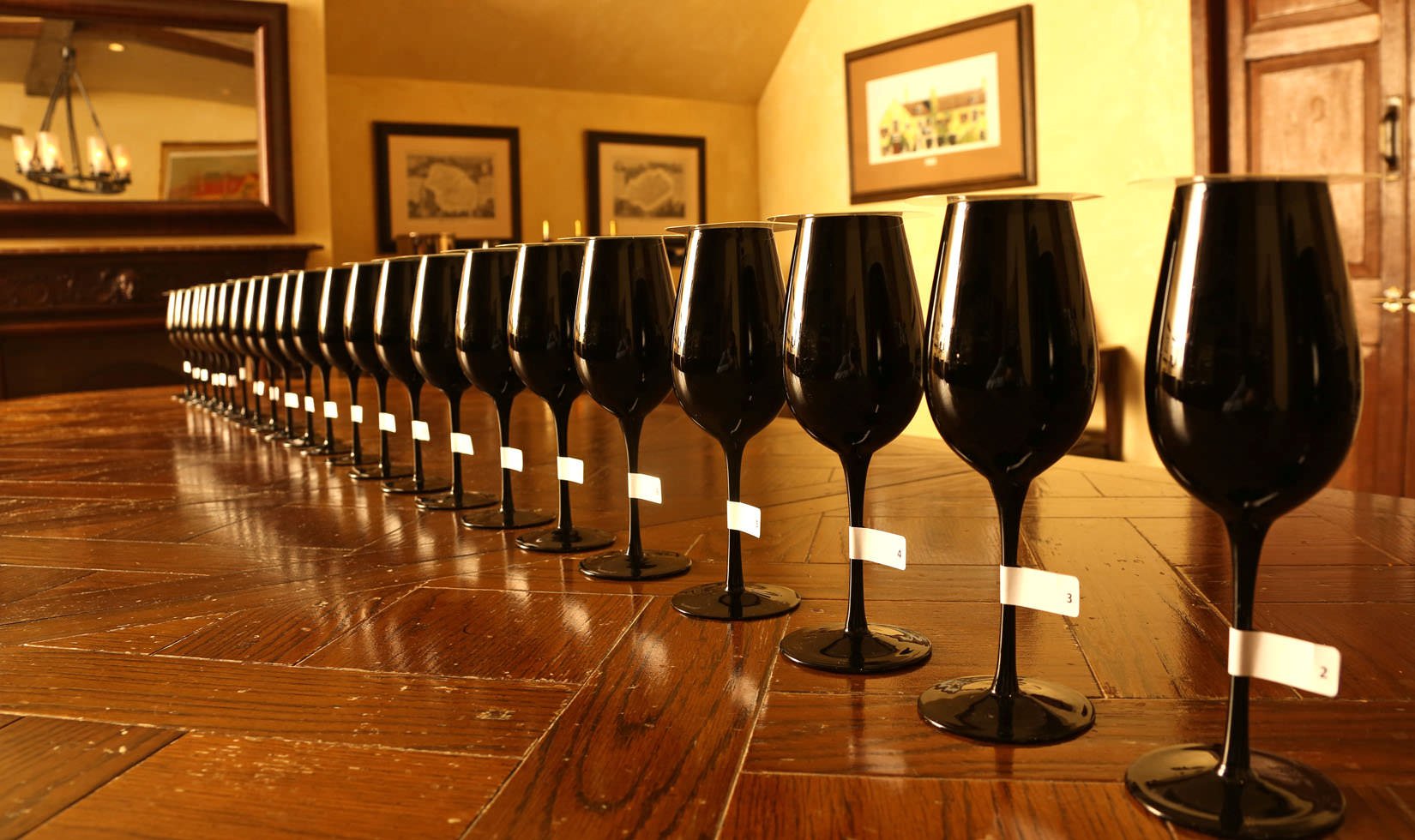Blind tasting? Not exactly. The 24 black glasses displayed in the above photo where part of an educational seminar, hosted last week in Jordan’s oak tank room for our distributor management teams. Each glass is labeled only with a number and contains an aromatic compound that may be perceived in various vintages of Jordan Cabernet Sauvignon from the current vintage to a bottle that has been cellared for decades.
Attendees of the seminar were asked to smell the contents of each glass and record their perception of what each aroma was on a card provided. From plums, cherries and cassis to cloves, black truffle and cedar, the scents in the glasses were bold yet elusive at times, making the experience humbling for all. Participants, including Jordan staff, were sometimes at a loss for words to identify an all-to-familiar scent, and at other times maybe a bit too certain about incorrect identifications. Competitive spirits kicked in as well, but that’s human nature.
Once everyone finished recording their guesses, the answer keys were provided. Correct or not, there were no rewards or consequences; the exercise was simply a fun recalibration of the olfactory system themed around several aromatic compounds that make up Jordan Cab. We’re looking forward to hosting a similar seminar with Jordan Estate Rewards members at our Retrospective Tasting in February.
The aromatics found in a bottle of Jordan Cabernet derive directly from the grape and its reaction to the fermentation process, barrel aging and maturing in bottle. Wine aromas can be broken into three basic categories: primary, secondary and tertiary. Primary characteristics arise purely from the grapes and may include, but are certainly not limited to, the following aromas: black currant, green bell pepper, chocolate, eucalyptus, violet and raspberry. During crush, our fermentation room is engulfed with aromas of blackberry, blueberry, plum and raspberry–aromatics that are classified as secondary characteristics and result directly from fermentation. (When yeast metabolizes during fermentation, it creates an explosion of fruit esters.) The third category, referred to as tertiary characteristics, arise during the aging of the wine in our barrel room and during bottle aging in the cellar. This is where the science of wine scents gets interesting. During malolactic fermentation–the natural conversion of malic acid to lactic acid–the mouthfeel of the wine is softened, but there is another pleasing byproduct: a hint of caramel. Depending on the percentage of French vs. American oak or new vs. mature, the barrel aging adds complexity of vanilla, coconut, baking spices, tea leaf, tobacco and leather. Further aging in the bottle is continous and ever evolving. For those that like their wines to be bright with fresh fruit aromas and flavors, then perhaps enjoying the wine in its youth is the best prescription. For a bit more development, some bottle aging can certainly contribute to the tertiary aroma complexity with hints of dried fruit, black olive, licorice, black truffle, cedar and forest floor in addition to the softened fruit structure.
The blind aroma exercise was followed by a discussion of the workings of the human olfactory system, the molecular structure of aroma molecules and how we perceive them, and where each of those 24 aromas likely arise from during the winemaking and aging process. The experience finished with a six-vintage vertical of Jordan Cabernet for attendees to apply their newly recalibrated noses, and of course, to simply enjoy the story that each vintage has to tell.
Here at Jordan, nearly all of our winemaking decisions are based solely off of blind tasting and aroma sessions set up much like this, whether it be pinpointing the exact moment when to harvest, deciding which vineyard blocks will earn their way into the final blend or choosing which combination of barrels will play the best supporting role for that vintage. It is exercises like these that keep our noses—and our winemaking minds—sharp and in tune.


